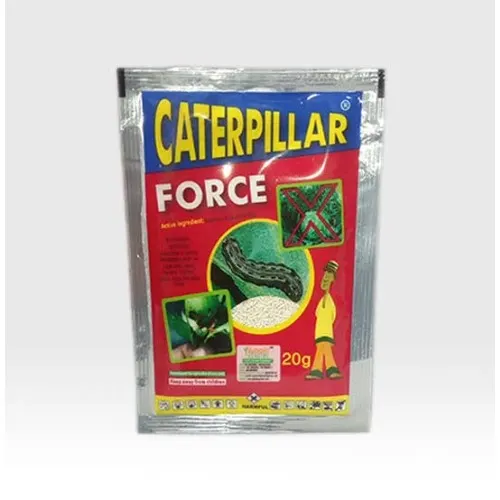Caterpillar force
₦3,550.00
19 people are viewing this product right now
🔥 8 items sold in last 3 hours
Caterpillar force, also known as caterpillar traction force or caterpillar drive force, refers to the force generated by the movement of a caterpillar track system. Caterpillar tracks are continuous tracks made of metal or rubber that wrap around a series of wheels or rollers. These tracks provide traction and distribute the weight of a vehicle over a larger surface area, which helps in navigating challenging terrains such as mud, sand, or snow.
Buy more save more!
Buy from 5 to ∞ items and get 5% OFF
on each productCaterpillar force, also known as caterpillar drive or caterpillar propulsion, is a fascinating concept rooted in the principles of biomimicry, engineering, and innovative propulsion systems. Derived from the locomotion of caterpillars, this concept involves a unique method of movement that has garnered attention for its potential applications in various fields, particularly in robotics, underwater vehicles, and space exploration.
Benefits:
- Efficient propulsion: it offers an efficient method of propulsion, enabling robots and vehicles to move smoothly and continuously with minimal energy expenditure.
- Adaptability: This form of locomotion allows for adaptation to various terrains and environments, making it suitable for traversing rough, uneven, or cluttered surfaces.
- Maneuverability: it provides excellent maneuverability, allowing robots and vehicles to navigate tight spaces and intricate pathways with ease.
- Stability: The synchronized movements inherent in caterpillar force contribute to enhanced stability, ensuring steady motion even in challenging conditions.
- Low noise: Compared to traditional propulsion systems, it generates less noise, making it suitable for stealthy operations in sensitive environments.
- Minimal surface disruption: The smooth, undulating motion of caterpillar force minimizes surface disruption, making it ideal for applications where environmental impact must be minimized.
- versatility:it can be applied across a wide range of platforms, including land-based robots, underwater vehicles, and potentially even spacecraft, showcasing its versatility.
- Reduced wear and tear: The controlled, rhythmic movements of caterpillar force help reduce wear and tear on mechanical components, leading to increased longevity and reliability.
- Increased traction: The segmented nature of caterpillar propulsion provides enhanced traction on challenging surfaces, improving overall performance in demanding conditions.
Only logged in customers who have purchased this product may leave a review.
Related products
₦5,500.00
![Sniper Insecticide-100ml 2 Caterpillar force, also known as <a href="https://farmpays.com/product/caterpillar-force/">caterpillar traction force</a> or caterpillar drive force, refers to the force generated by the movement of a caterpillar track system. Caterpillar tracks are continuous tracks made of metal or rubber that wrap around a series of wheels or rollers. These tracks provide traction and distribute the weight of a vehicle over a larger surface area, which helps in navigating challenging terrains such as mud, sand, or snow. [caption id="attachment_18663" align="alignnone" width="225"]<a href="https://farmpays.com/wp-content/uploads/2024/02/Caterpillar-force-1.jpg"><img class="size-full wp-image-18663" src="https://farmpays.com/wp-content/uploads/2024/02/Caterpillar-force-1.jpg" alt="Caterpillar force" width="225" height="225" /></a> Caterpillar force[/caption] Sniper Insecticide-100ml Sniper Insecticide](https://farmpays.com/wp-content/uploads/2024/02/download-1-1-100x100.jpg)
![Magic force 3 Caterpillar force, also known as <a href="https://farmpays.com/product/caterpillar-force/">caterpillar traction force</a> or caterpillar drive force, refers to the force generated by the movement of a caterpillar track system. Caterpillar tracks are continuous tracks made of metal or rubber that wrap around a series of wheels or rollers. These tracks provide traction and distribute the weight of a vehicle over a larger surface area, which helps in navigating challenging terrains such as mud, sand, or snow. [caption id="attachment_18663" align="alignnone" width="225"]<a href="https://farmpays.com/wp-content/uploads/2024/02/Caterpillar-force-1.jpg"><img class="size-full wp-image-18663" src="https://farmpays.com/wp-content/uploads/2024/02/Caterpillar-force-1.jpg" alt="Caterpillar force" width="225" height="225" /></a> Caterpillar force[/caption] Magic force Magic force](https://farmpays.com/wp-content/uploads/2024/04/download-100x100.jpg)
₦10,000.00



![Caterpillar force 1 Caterpillar force, also known as <a href="https://farmpays.com/product/caterpillar-force/">caterpillar traction force</a> or caterpillar drive force, refers to the force generated by the movement of a caterpillar track system. Caterpillar tracks are continuous tracks made of metal or rubber that wrap around a series of wheels or rollers. These tracks provide traction and distribute the weight of a vehicle over a larger surface area, which helps in navigating challenging terrains such as mud, sand, or snow. [caption id="attachment_18663" align="alignnone" width="225"]<a href="https://farmpays.com/wp-content/uploads/2024/02/Caterpillar-force-1.jpg"><img class="size-full wp-image-18663" src="https://farmpays.com/wp-content/uploads/2024/02/Caterpillar-force-1.jpg" alt="Caterpillar force" width="225" height="225" /></a> Caterpillar force[/caption] Caterpillar force Caterpillar force Caterpillar force,pest control chemicals,insect control,pesticide control,best insecticide,integrated pest management,pest control products,pests control,pest spray,insect spray Caterpillar force](https://farmpays.com/wp-content/uploads/2024/02/Caterpillar_force-.png)





Reviews
There are no reviews yet.